This piece was published May 2, 2025. Print version to come!
Scroll down to read the full piece, or on washingtonpost.com
Picture this: I’ve packed my bag, brushed my hair, and I’m ready to run that errand. As the door clicks open, a familiar thought flashes across my mind: “You can still get out of this. You can stay home where you’ll be safe.” About 1.3 percent of U.S. adults experience agoraphobia, an anxiety disorder that causes an intense fear of becoming overwhelmed, helpless or judged. This is why people with agoraphobia, like me, often have a difficult time leaving their homes. Studies have shown that the pandemic elevated the burden of anxiety disorders around the world, especially for women and low-income earners.
During university, my fear of being judged led to missed classes, and an abundant reserve of instant ramen noodles allowed me to avoid going out. After graduation, the daily rhythm of going to work at an office helped me break through my thought spirals, and my agoraphobia faded into the background.
However, my recent move to a new city set off my agoraphobia once more. While each day can look different, opening the front door can sometimes feel like lifting a boulder. This can throw me into an extended cycle of shame and avoidance. Here’s how therapy and other methods have helped me cope with relapses.
References for agoraphobia coping skills from DBT Skills Training Handouts and Worksheets, Second Edition, by Marsha M. Linchan.
Edited by Hannah Good, Anjuman Ali and Theresa Tamkins. Art direction by Chelsea Conrad and Hannah Good. Design editing by Christian Font. Copy editing by Laura Michalski.






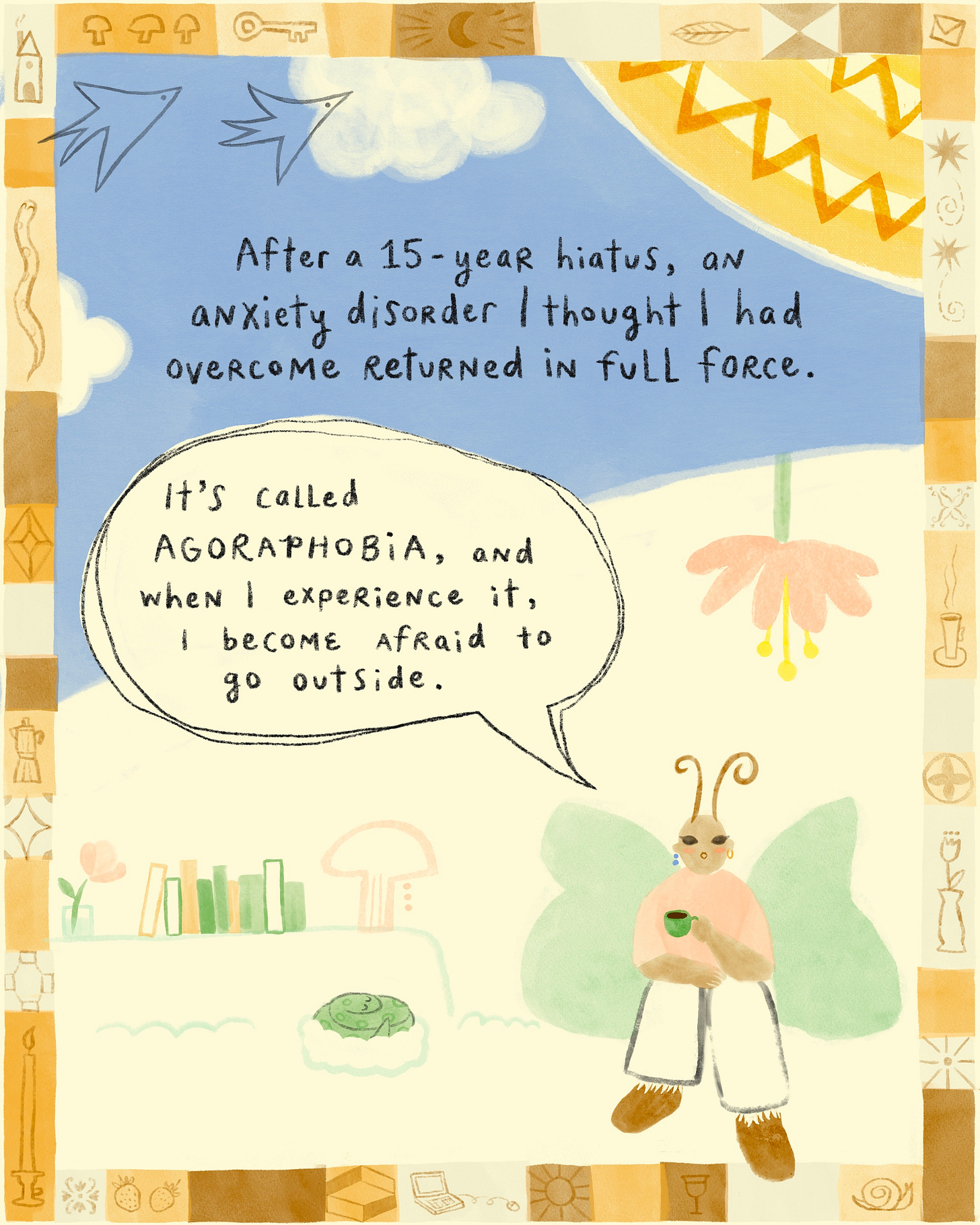

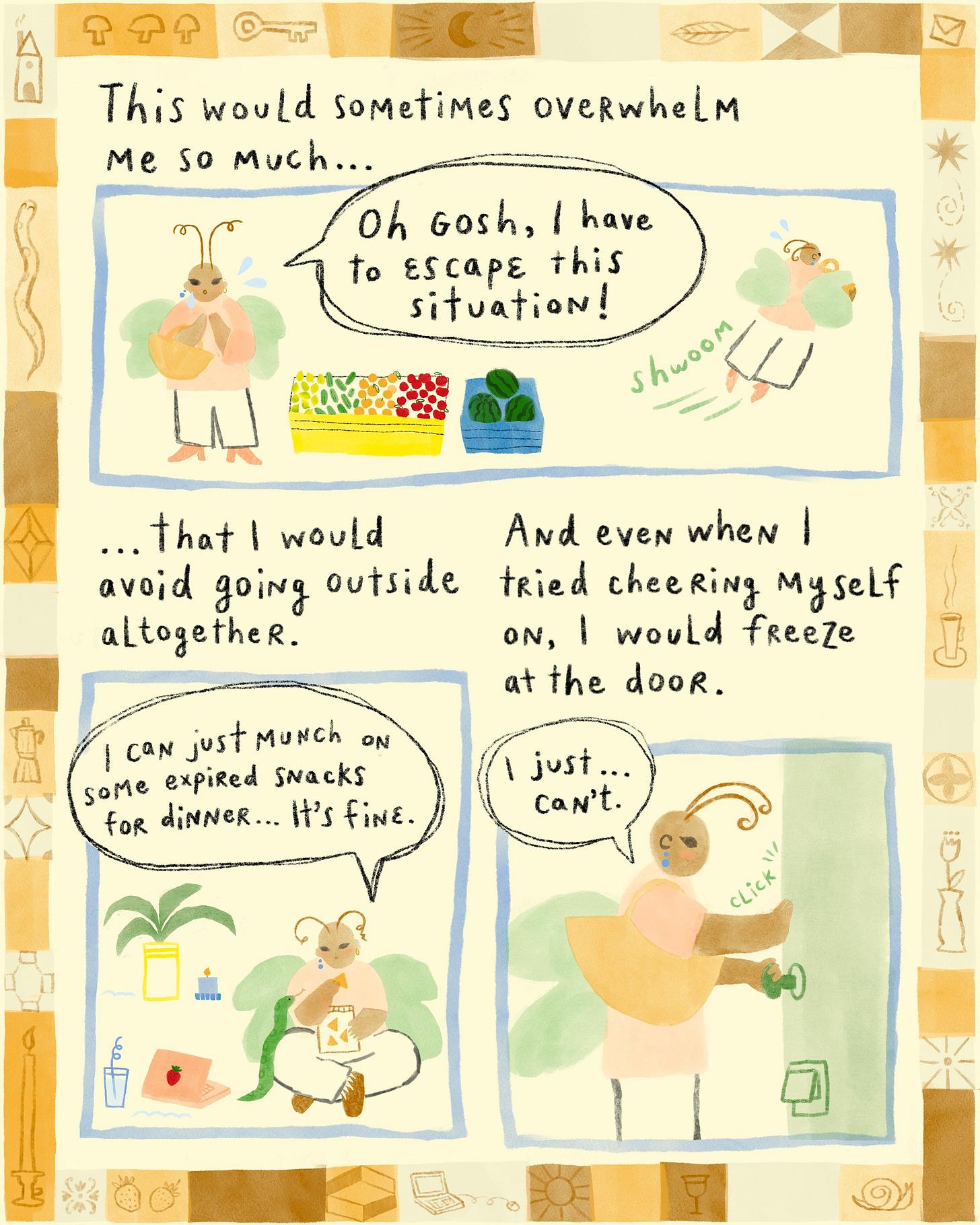
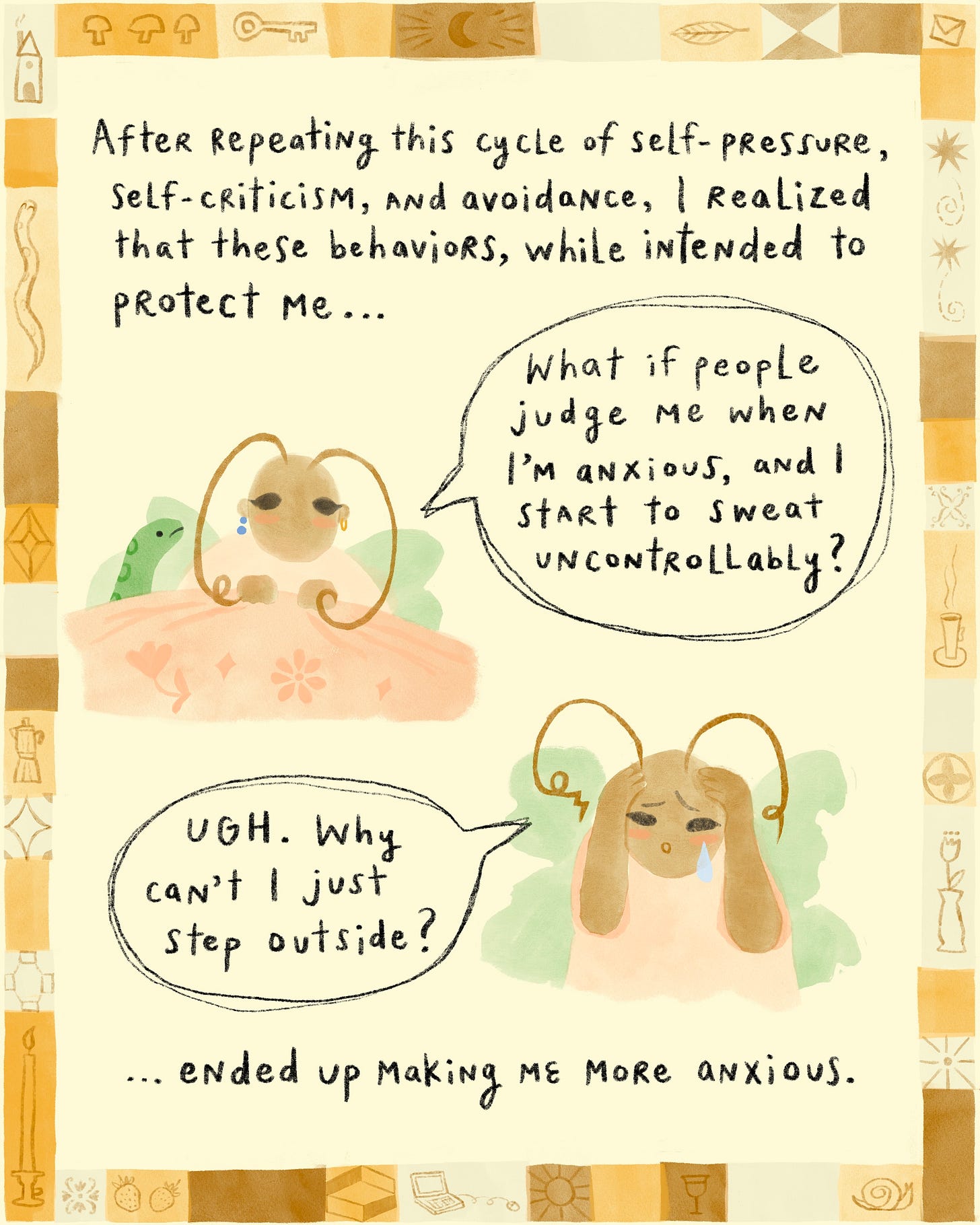
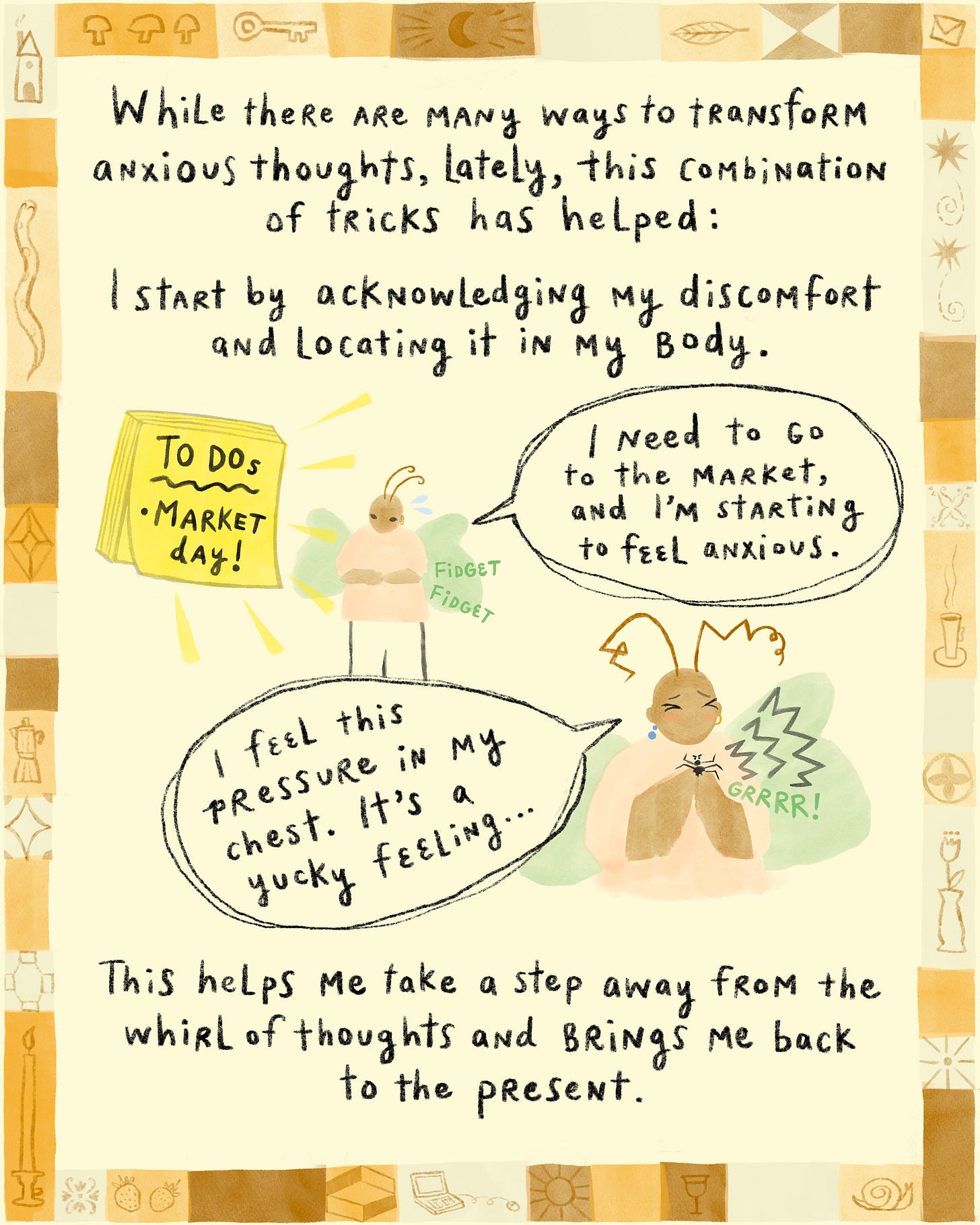
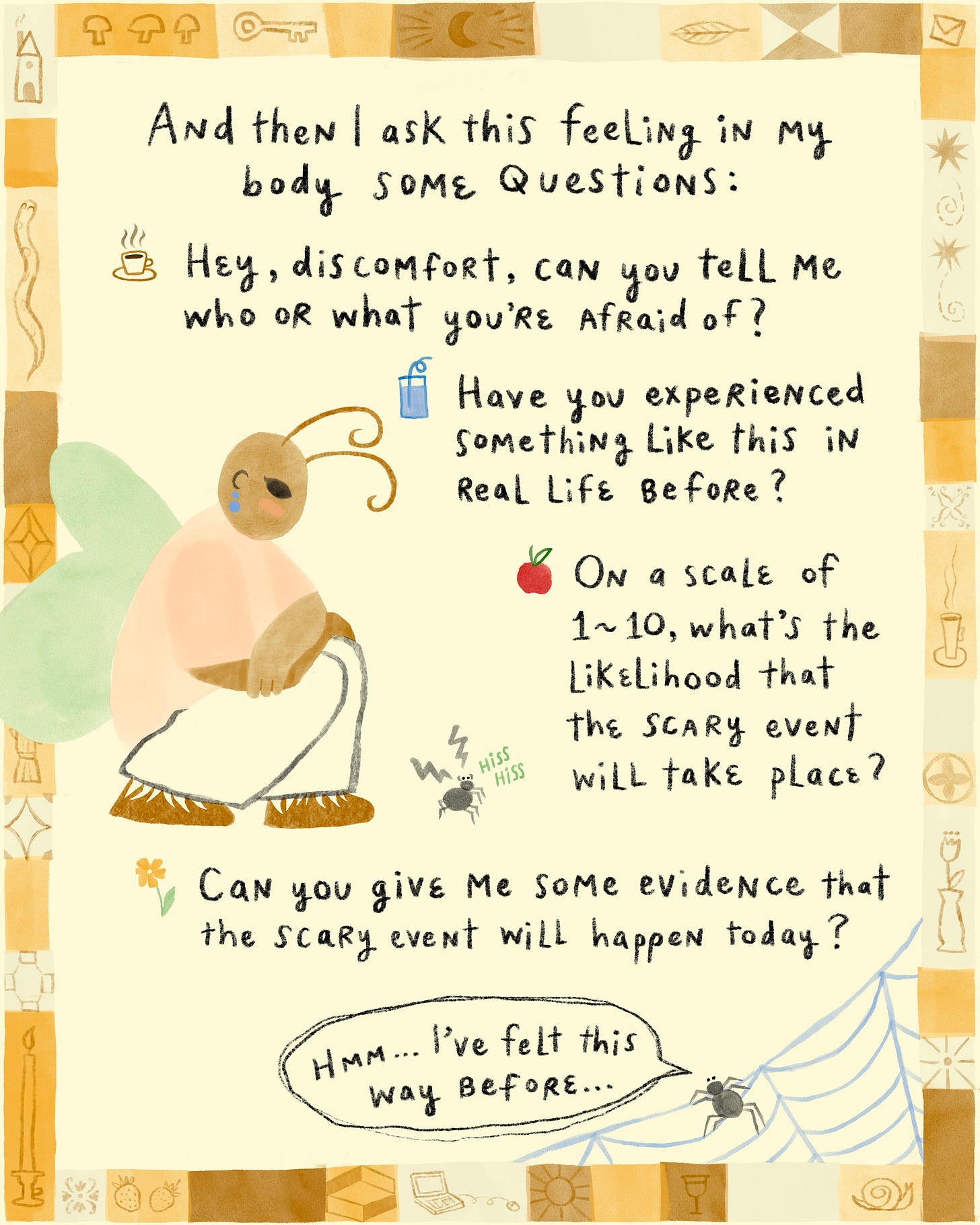
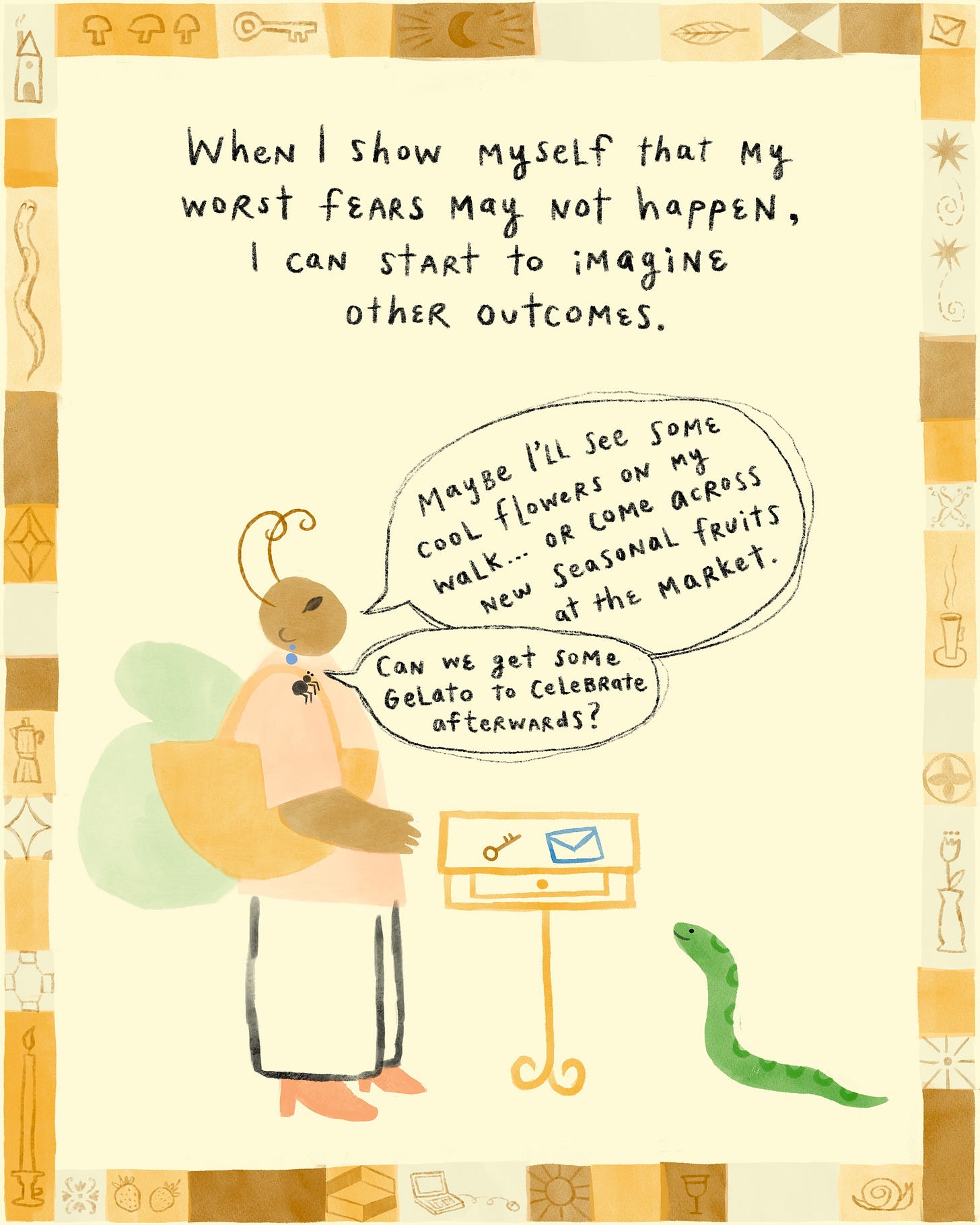
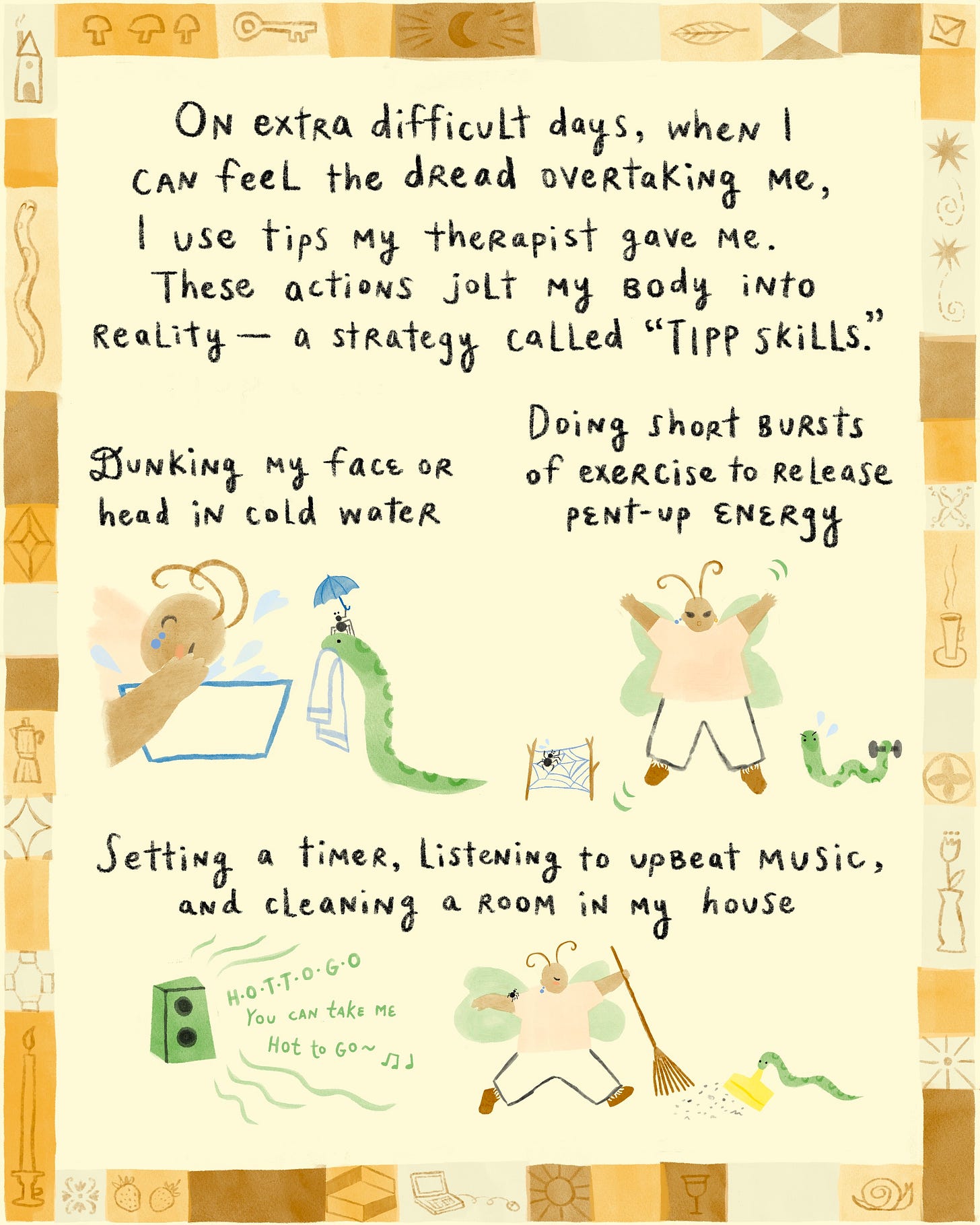


Haruka,
This is so beautiful , the art and the writing. I am sure that it will have an impact on anyone who suffers from agoraphobia and reads this. I already have a couple people in mind and I will forward this to them. It will certainly reinforce for them that they are not alone.
Big hug to you! Beth
♥️♥️♥️